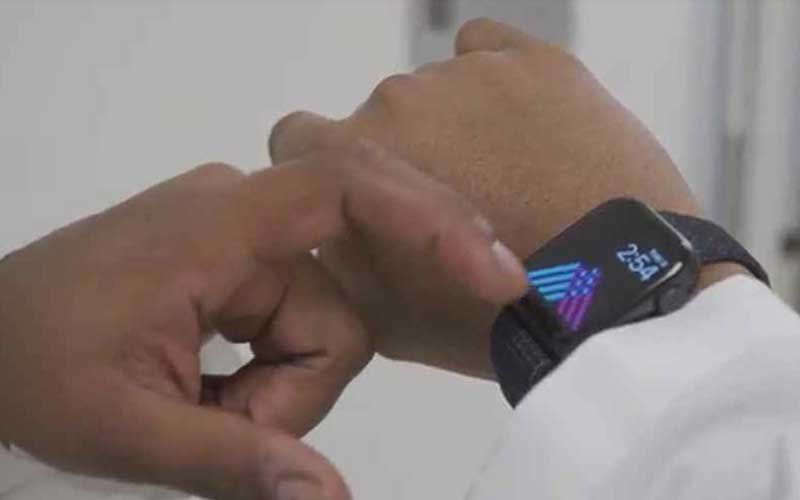
Subtle changes in an individual’s heartbeat, which can be measured on an Apple Watch, are able to signal the onset of COVID-19 up to seven days before individuals are diagnosed with the infection. That preliminary observation was made by researchers at the Icahn School of Medicine at Mount Sinai in a new preprint from the Warrior Watch Study, which was recently uploaded to the medRxiv server.
The investigators followed 297 health care workers at the Mount Sinai Health System between April 29 and September 29. The participants downloaded a customized app onto their iPhones and wore Apple Watches. Changes in their heart rate variability (HRV)—a measure of nervous system function detected by the Apple Watch—were used to identify and predict whether the workers were infected with COVID-19.
“The watch showed significant changes in HRV metrics up to seven days before individuals had a positive nasal swab confirming COVID-19 infection and demonstrated significant changes at the time of symptom development,” says the study’s corresponding author Robert P. Hirten, MD, Assistant Professor of Medicine (Gastroenterology) at the Icahn School of Medicine at Mount Sinai. Daily symptoms that were collected included fever or chills, tiredness or weakness, body aches, dry cough, sneezing, runny nose, diarrhea, sore throat, headache, shortness of breath, loss of smell or taste, itchy eyes, or none.
Interestingly, the researchers also found that seven to fourteen days after diagnosis with COVID-19, the HRV pattern began to normalize and was no longer statistically different from the patterns of those who were not infected.
“Developing a way to identify people who might be sick even before they know they are infected would really be a breakthrough in the management of COVID-19,” Dr. Hirten says. “One of the challenging things about COVID-19 is that many people are asymptomatic, meaning they have no symptoms but are still contagious. This makes it difficult to contain this infection by using the traditional method of identifying someone who is sick and quarantining them.”
As a gastroenterologist, Dr. Hirten has been an early proponent of using the Apple Watch and other wearable devices to better understand and manage chronic conditions such as Crohn’s disease and ulcerative colitis. He found that measuring HRV in patients with inflammatory bowel disease helps identify and predict periodic flare-ups. “When the COVID-19 pandemic hit,” he says, “we figured, ‘Let’s try to use the advances we’ve made in studying wearable devices to address the crisis.’”
The Warrior Watch Study, which is ongoing and includes a wide range of Mount Sinai employees—from doctors and nurses to security guards—was designed with two goals in mind, says Dr. Hirten. The first goal was to see whether infection prediction was possible by assessing the data that was collected through the end of September. The other goal was to gauge the effects of the pandemic on the mental health of Mount Sinai’s health care workers. This will be addressed in a separate paper.
“This technology allows us not only to track and predict health outcomes, but also to intervene in a timely and remote manner, which is essential during a pandemic that requires people to stay apart,” says the study’s co-author Zahi Fayad, PhD, Director of the BioMedical Engineering and Imaging Institute and the Lucy G. Moses Professor of Medical Imaging and Bioengineering at the Icahn School of Medicine at Mount Sinai.
Digital health is a relatively new field that holds enormous promise. It provides doctors with patient data that would not otherwise be readily available and requires little input from patients themselves. Mount Sinai’s study asks participants to wear the watch for at least eight hours a day and respond to daily questions that inquire about how they are feeling and whether they have been tested for COVID-19.
Apple Inc. and other wearable device manufacturers are very interested in how their products contribute to health care outcomes, as well. In September, Apple’s Chief Executive Officer, Tim Cook, mentioned Mount Sinai’s Warrior Watch Study during the company’s virtual product launch event.
“This study really highlights where digital health is moving,” Dr. Hirten says. “It shows that we can use these technologies to better address evolving health needs, which will hopefully help us better manage disease in the future. While we aren’t there yet, our goal is to operationalize these platforms to improve the health of our patients. The Warrior Watch Study is a significant step in that direction.”
Recent Comments